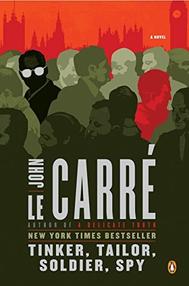Dear Minneapolis, I know you have been through this before, and you are going through it again. But maybe some of you are feeling it for the first time, and I want to share my experience of what will come next. Maybe it will feel familiar. Maybe it will help you heal. Maybe it will help you understand. Or maybe you’ll just ignore it, and that’s ok, too. ...
— posts —
I joined 3CR out of Melbourne to talk about making Nazis cry and the threat of white supremacy.
— social —
Please review my contact guidelines.
— currently reading —
Tinker, Tailor, Soldier, Spy
John le Carré
Finnegans Wake
James Joyce , James Joyce
Support your local bookseller!
— projects —
A blog about preparedness from a community-oriented point of view.
A tool for regularly purging your Bluesky social media feeds.
A people’s history of the removal of statues honoring racists, slave owners, and colonizers, largely during the Uprising in the Summer of 2020 following the murder of George Floyd.
A study of the daily lives of violent far-right actors using court records to peer inside their living spaces.
Youth Equity and Sexuality Lab
I advise the Youth Equity and Sexuality Lab at Suffolk University, a research lab focused on promoting positive adolescent and young adult sexuality development; preventing sexual violence; and fighting fascism, cis-hetero-patriarchy, and white supremacy.
I am an advisory board member of The Prosecution Project, a data-driven project studying the patterns of prosecution of extremism, terrorism, and political violence.
I am an advisory board member of the Advancing Data Justice project, a collaboration between the Alan Turing Institute, the Global Partnership on AI (GPAI), and individuals and communities across the globe.
The opinions shared on this page do not necessarily reflect the views of any organization listed above.






